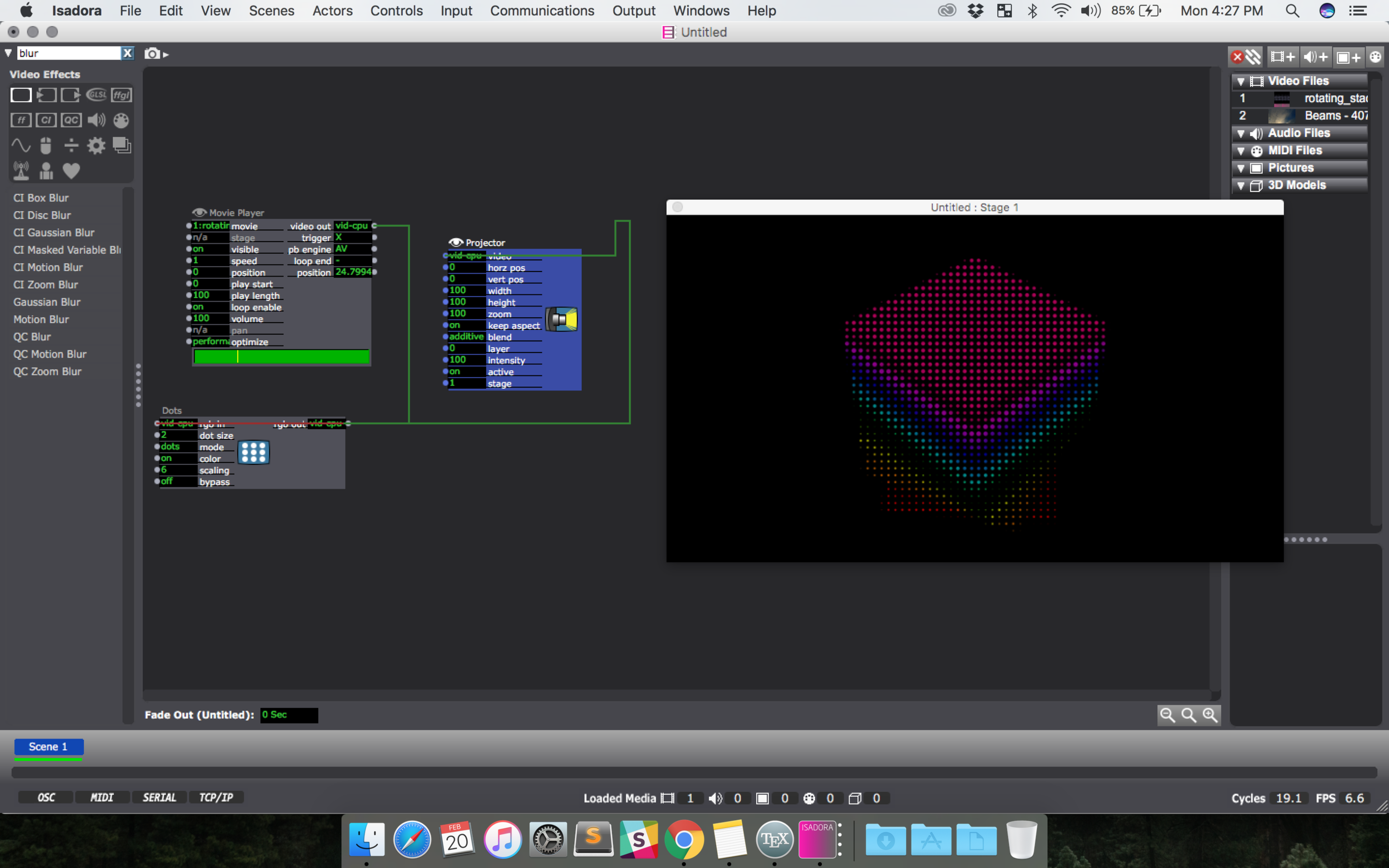"If we define art as part of the realm of experiences, we can assume that after a viewer looks at a piece, he 'leaves' with the art, because the 'art' has been experienced."
The most interesting approach that Robert Irwin attempted with all his art was that, no matter the medium, he was always focused on the concept of perception and the idea of the unmediated presence. He understood that one builds energy by the interaction between things. The red and the green dots in his early works caused a vibration sense in the observer because of the interaction between the closeness of the two colors.
His approach was to "maximize the energy or the physicality of the situation and minimize the identity or idea or imagery of the situation". Emphasizing on the perceptual experience rather than what they mind thinks of it.
It's interesting to talk about presence while discussing Irwin's red and green dot canvas. If you aren't present and open when observing this piece of art, you would miss the point. You may miss out on the energy people have described they felt in its presence. For example, the two girls that attended the gallery at the Philadelphia Museum of Art, one of the girls missed the entire experience when viewing Irwin's piece because what she saw initially, she dismissed as simply a white canvas. She wasn't present in that moment and the intention was lost on her. The sense of the environment that Irwin was trying to demonstrate was lost.
On the other hand, some people were so present in Sao Paulo gallery that they viciously attached the painting.
The discs that Irwin created later on his career were interpreted by many as symbols of their own cultures: mandalas, butterflies, an eye, a sun -- none of which came across Irwin's mind in the creation of the art. It intrigues me that Irwin was out to solve a problem of a "never ending canvas" to be perceived so differently by each observer. It seems that this was contrary of what Irwin wanted in his expression of art: he wanted his art to be experiential and not intellectual as mentioned above. "The medium is not the message... the art is what happened to the viewer" This is an interesting quote that I think strengthens this thought:
"... as I walk through the world, I bring into focus certain things which are meaningful, and others are be degrees less in focus, dependent upon their meaningfulness in terms of what I'm doing, to the point where there are certain things that are totally out of focus and invisible. We organize our minds in terns of this hierarchical value structure, based on certain ideas about meaning and purpose and function."
This is also fitting for Irwin's approach to the art he created. He created art to appear almost invisible, however, each observer would ultimately see what they wanted to see in his work which was probably based on what was going on their their life at that moment.
When Irwin did the experiments in the anechoic chamber, he mentioned that after many hours with no audible or visible stimulus, and then exposed to the world, everything was so vibrant. He would notice more about his environment. He was experimenting with the thought surrounding focus. In how he mentioned that we have a filter for what is meaningful and that the meaningfulness aspects would almost be visible, now you could strip this biased focus by exposing the individual to no stimulus and then to everything at once.
A quote from the book that I want to hold on to , but doesn't necessarily relate to the content above:
"The critical difference is that the artist measures from his intuition, his feeling. In other words, he uses himself as the measure. Whereas the scientist measures out of an external logic process and makes his decision finally on whether it fits that process in terms of various external abstract measures."
I am the latter, working on trusting my intuition and to be comfortable with the concept of open-endedness.












